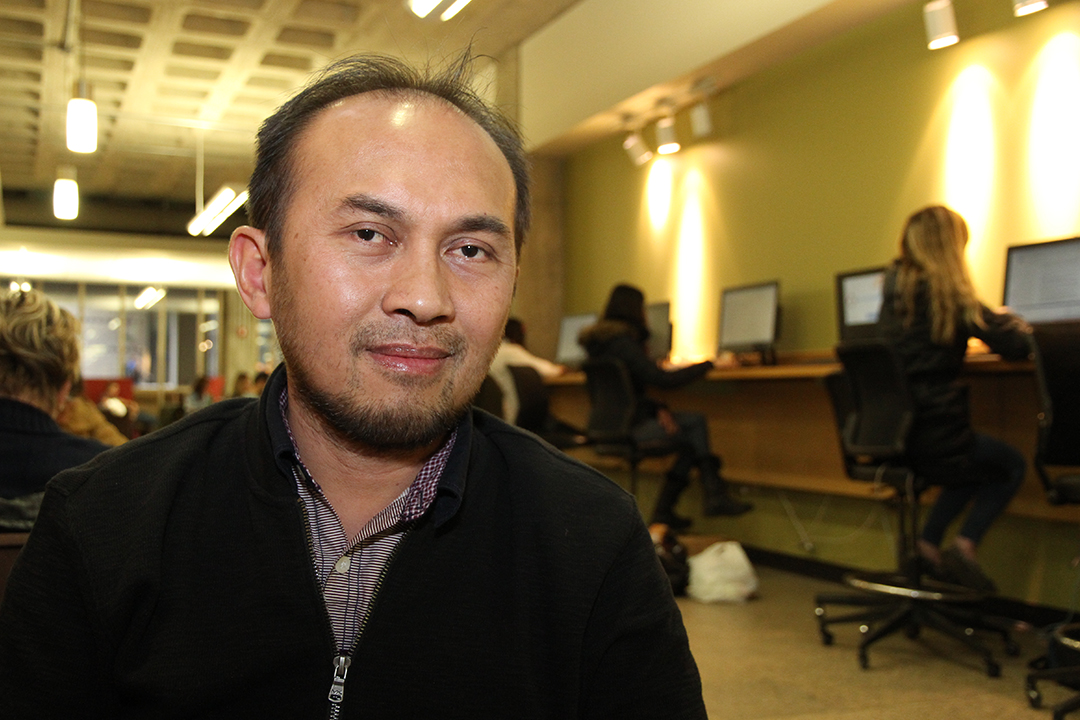
Examining Hollywood’s portrayal of Islam
A unique course in the College of Arts and Science is taking a critical look at the cinematic depiction of Muslims.
By Lesley PorterIslam in Hollywood, a second-year class in the Department of Linguistics and Religious Studies, examines and analyzes the images of Islam as manufactured and portrayed in the Hollywood film industry over the last half-century.
“What we are doing in class is basically just watching movies,” said Fachrizal Halim, the course instructor and a faculty member in the department, “but at the same time, learning this political history and building this interdisciplinary perspective.”
The main goal of the class, he continued, is to expose students to a wide base of representation of Muslims in media, in the context of American political history as well as Muslim history in the modern world. That political, historical and social context is important to know, as it is directly tied to its portrayal in the movies, Halim said.
“Given many images about Islam and Muslims were produced from the perspective of dominance, coercion and subjugation, Hollywood has not advanced our knowledge about the subject,” he said, adding that the inconsistent portrayal of Muslims has “limited our ability to establish knowledge about Islam and Muslim societies.”
To cover all the bases, the class covers three pertinent themes and time periods, starting with the 1962 epic Lawrence of Arabia.
“These are the classical images: that Arabs are barbaric, Arabs are irrational, Arabs oppress women,” he said. “They are very classic images of Orientalism.”
The next period, starting from the post-1979 Iranian revolution all the way up to the Gulf Wars, focuses on national security concerns. Films such as Rambo III (1988), True Lies (1994) and The Siege (1998) inaccurately or unfairly portray Muslims in a dangerous light by linking their religious practices to terrorism. Another focus is the growing use and impact of technology to perpetuate warfare.
Finally, the time shifts to post-9/11 and the American-led global war on terrorism. From here, the representation of Islam became much more balanced and nuanced, as seen in the 2005 film Syriana.
“Syriana portrays much more complex images of Islam,” Halim said. “It doesn’t use the same model as seen in Rambo.”
Additionally, the post-9/11 era has created another approach to the portrayal of Islam in the movies: the notion of good Muslims versus bad Muslims.
“The bad ones are the terrorists—those who do actual damage. Those who are good are those who are loyal, who are obedient citizens,” explained Halim.
However, this can be problematic—as with most dichotomies—as there is little to no grey area in between, he said.
“How do you define good and bad?”
Currently in its second year, Halim created the class to bridge gaps pertaining to the portrayal of Islam and Muslim societies in media products while providing an interdisciplinary perspective. Without such an understanding, he said, viewers are left with “an inadequate analysis that produces an ill-informed conception and a self-perpetuating cycle of misunderstanding and resentment towards the multiple realities of Muslims.”
As the majority of the class is spent watching movies, he encourages students to bring popcorn and other snacks to help set the scene.
“They really enjoy this class,” he said, “not because of watching the movies, but they learn something that otherwise is unavailable to them.”
